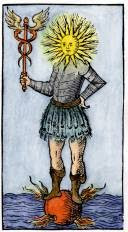Alchemy and The Red Book

When Jung was having his initiation, which occurs in the writing and art of The Red Book, it was his introduction into the rights of alchemy, this wild formula for converting the matter of one's life into spirit.
I contacted Adam McLean about Jung's work in Alchemy. McLean is the founder of Hermetic Journal and a leading voice in the study of alchemical texts. McLean labors intensely to reproduce and publish the arcane and little known alchemical works on which Jung--and, since, countless others--based his work. McLean states on his stunning website (levity.com) that he was once enamoured of Jung's work. I emailed him asking him, basically "what happened" and he replied (within hours) that he simply prefers working in the originals. I respect that, and i also see it as in deep keeping with the nature of alchemy itself--a return to, and journey through, origin into the highest self.
McLean's work allows us to see the sources Jung turned to--the dark and peculiar, often grotesque drawings of the medieval texts such as Mutus Liber. It was on these books that Jung based his own Red Book. To explore them visit McLean's website: http://www.levity.com/.
For me, the images of the old stuff deeply spoke almost as soon as I'd opened Lyndy Abrahams' Dictionary of Alchemical Imagery. Granted I was going through absolute hell at the time and had reached out into alchemy since I'd heard it was the source of the deep healing (called politely "depth psychology" professionally, but I call it something quite different). I started to see the symbols dance with each other, and they became increasily illuminated--even playful. There is a joy in working with alchemy and its artwork. Its elements and writings look dark and frightening--as does the Book of Revelations, but inwardly, elucidated by the dictionary and the work of McLean (who is acknowledged in the dictionary), all of it is about reaching a deeper place in ourselves, a place so dark it glows.



Comments
--Lara Lynn Lane